Maryland Sheep & Wool Festival
The Maryland Sheep & Wool Festival is an annual festival that showcases sheep, wool, and the products made from them. It’s held on the first weekend of May each year.
Thankfully I don’t live too far from Maryland. I can take a day trip to Maryland Sheep & Wool! Or at least it would be if it were a bit smaller. I’ve attended for several years and I still haven’t seen everything it has to offer, though I am sure trying!
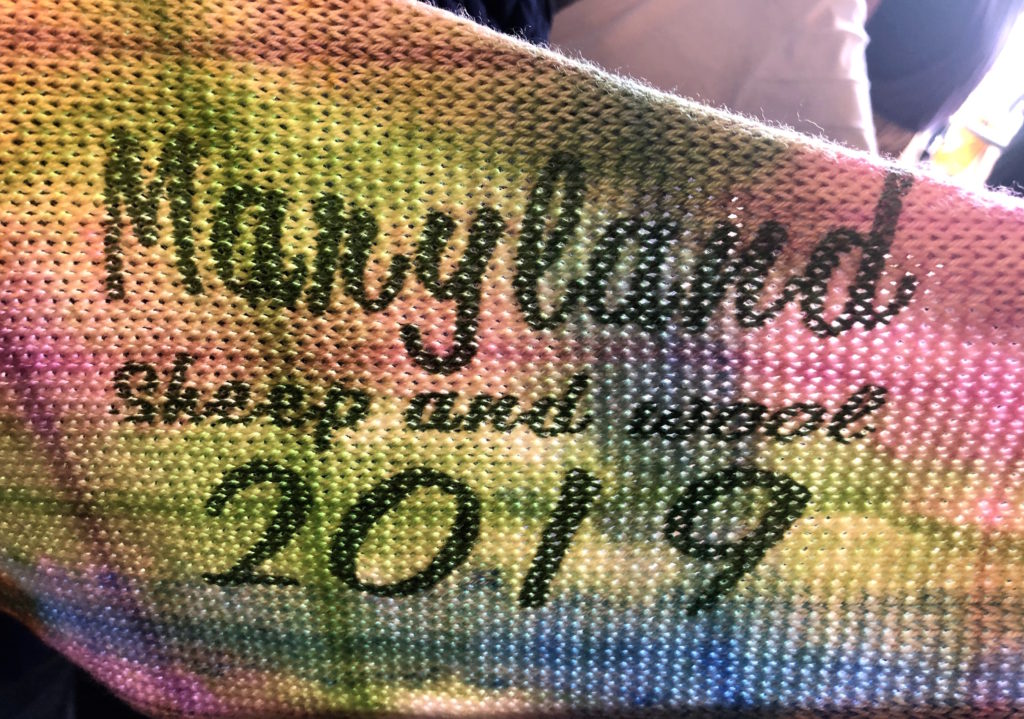
Our Arrival
The doors opened at 10:00AM, but we arrived early. As you can see, others had the same idea! It was already crowded. Luckily we didn’t have trouble finding parking. I found a spot in the first section of the lot and fairly close to the fairgrounds.
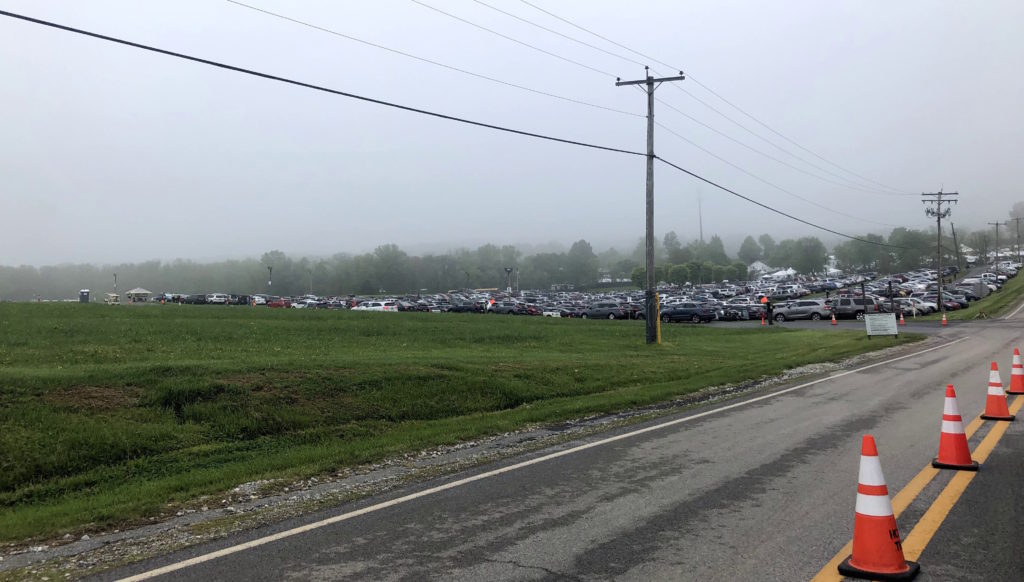
The excitement was palpable. I thought my giddiness was a little silly, but I noticed that my fellow knitters and crocheters were chatting excitedly, too. Most were proudly wearing their favorite handmade items.
Sheep (& Wool)
It was a misty, cool morning and I couldn’t wait to get out of the weather. Our first stop was the livestock barns. They were fairly close to the entrance.
Before the festival, I was sure the wool (well, maybe just the yarn) would be the most interesting thing I saw at this festival. I didn’t expect to fall in love with all of these sheep, too!
Hog Island Sheep
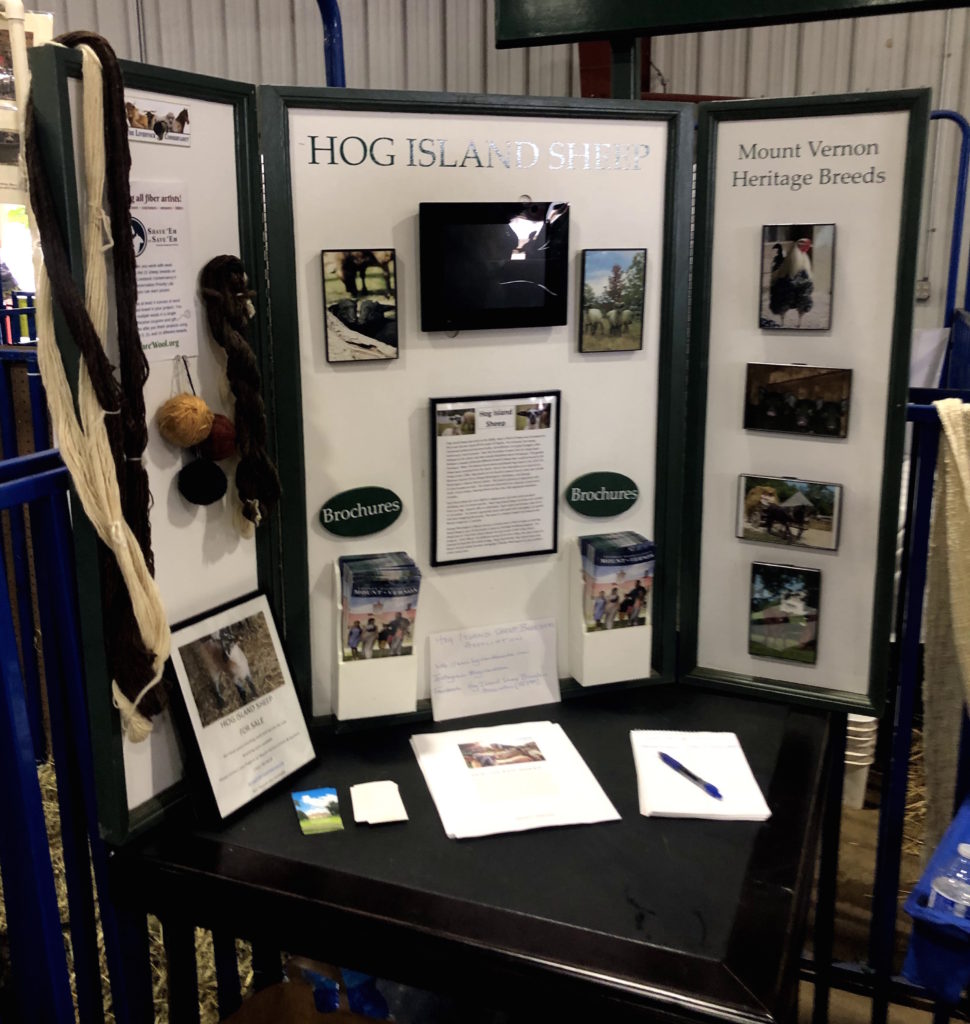
The Hog Island sheep has been my favorite breed since I visited the flock at Mount Vernon. I was so happy to find them at the Maryland Sheep & Wool Festival, too. The owners had a large display showcasing this rare heritage breed.
I love these sheep for their backstory, which is quite unusual. They originated on a barrier island off the coast of Virginia. That’s right — sheep on an island! The once-inhabited island was abandoned by humans and the sheep were left behind. They continued reproducing and certain characteristics emerged, leading to a separate breed altogether.
Decades later, these feral sheep were removed from the island and now live in colonial-era living museums.
Jacob Sheep
Another breed that caught my eye was the Jacob sheep. It’s easy to see why. Just look at those horns!
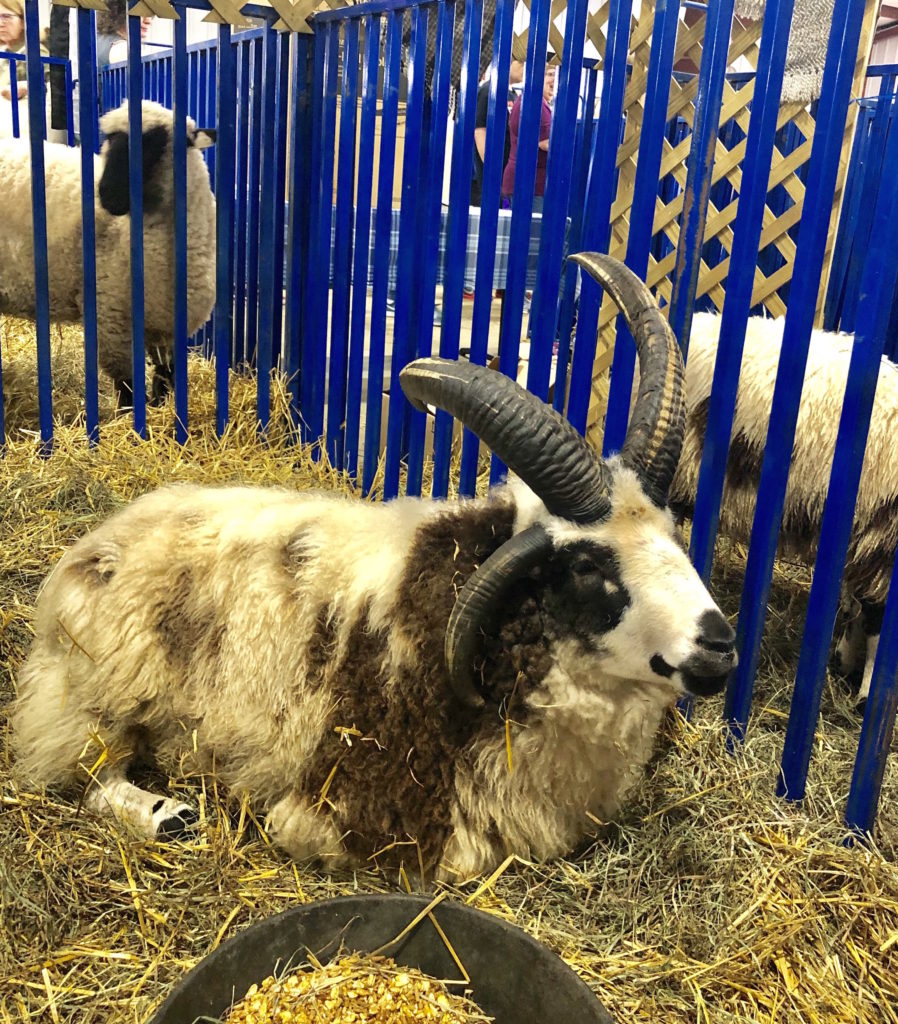
The Jacob sheep is a heritage breed named for Jacob of the spotted sheep. Despite this Biblical name, they have a devilish look. They can have as many as six horns! My children thought they looked a little bit creepy.
In England, Jacob sheep are kept for their meat, but in the States you’ll find them kept for their spotted fleeces.
Romanov Sheep
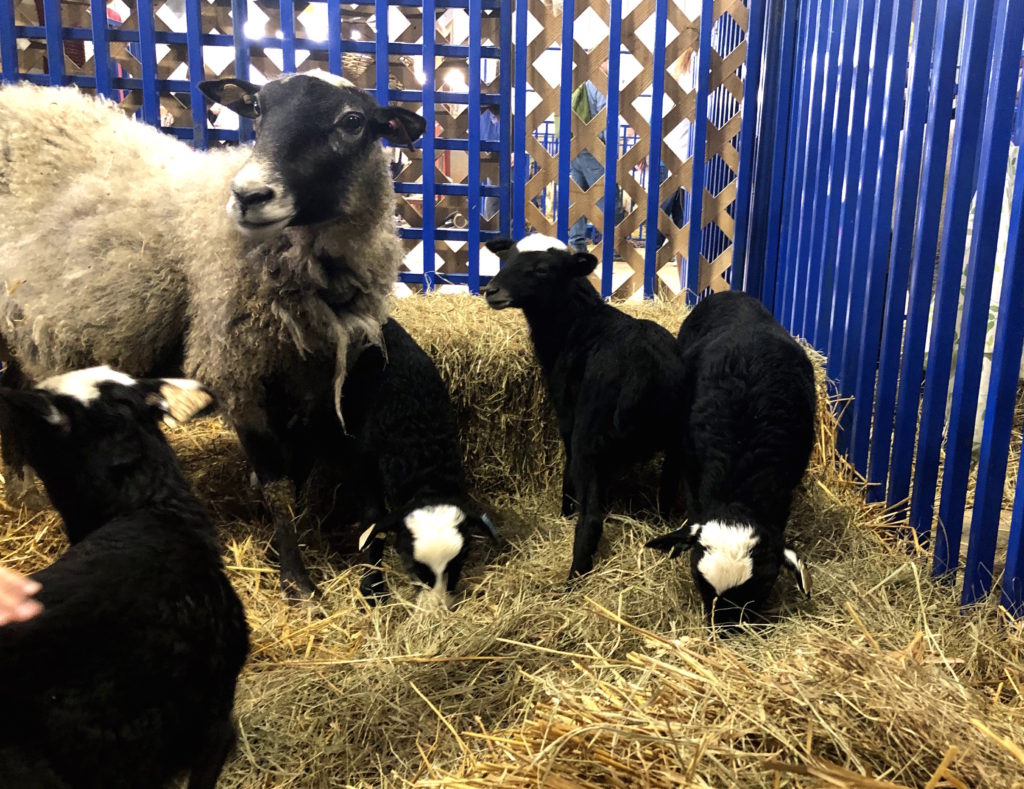
I couldn’t resist snapping a picture of these beautiful baby Romanov sheep. As you may have guessed, this breed originated in Russia. It came to the United States by way of Canada just a few decades ago.
This is another breed that is typically kept for meat, though the wiry, thick wool is often used in rugs and mats.
Sheep, Sheep, Sheep!
Look at all these cuties!
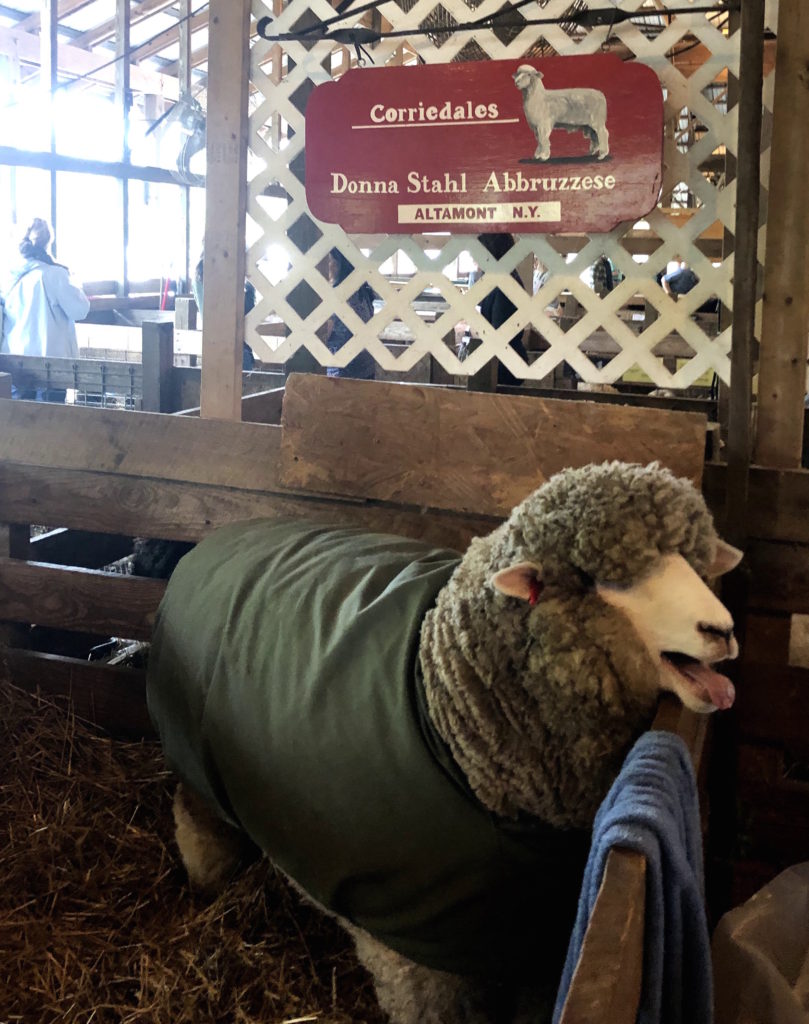
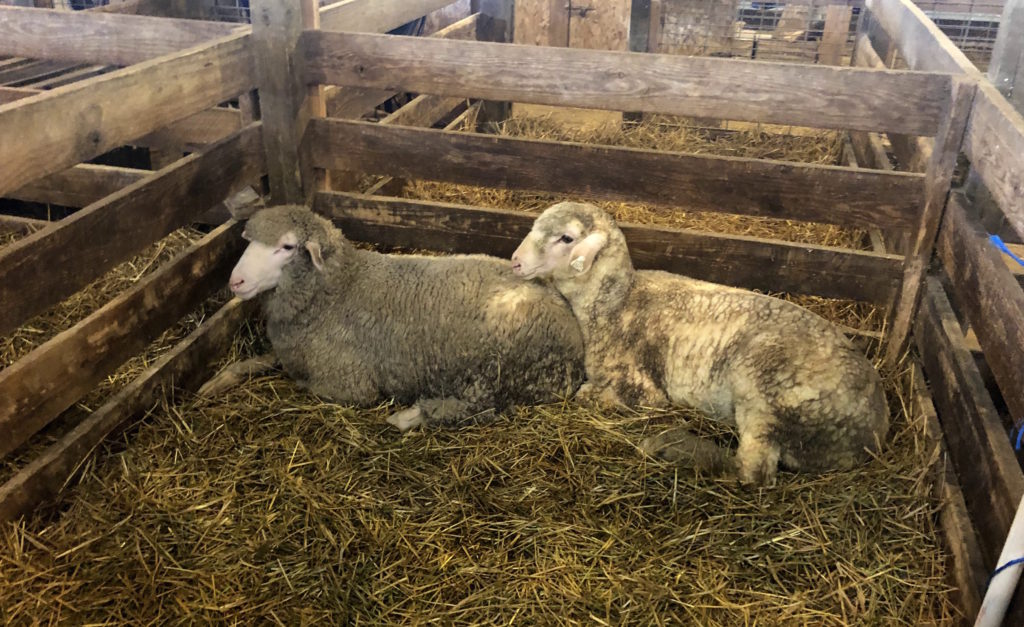
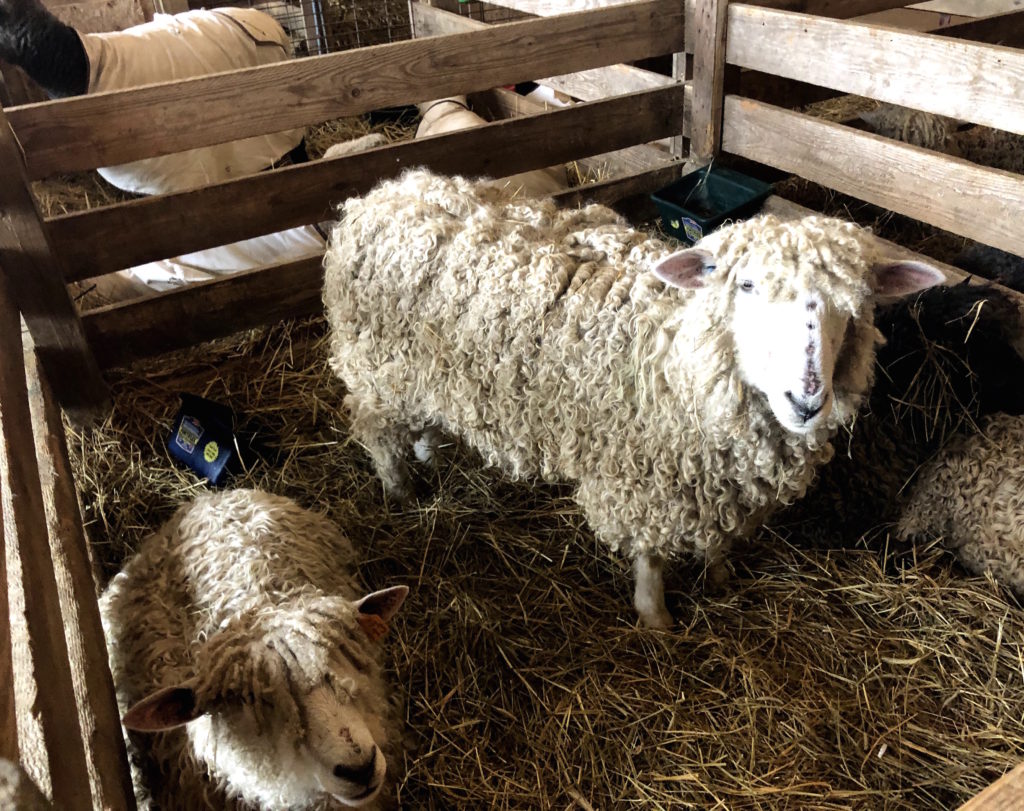
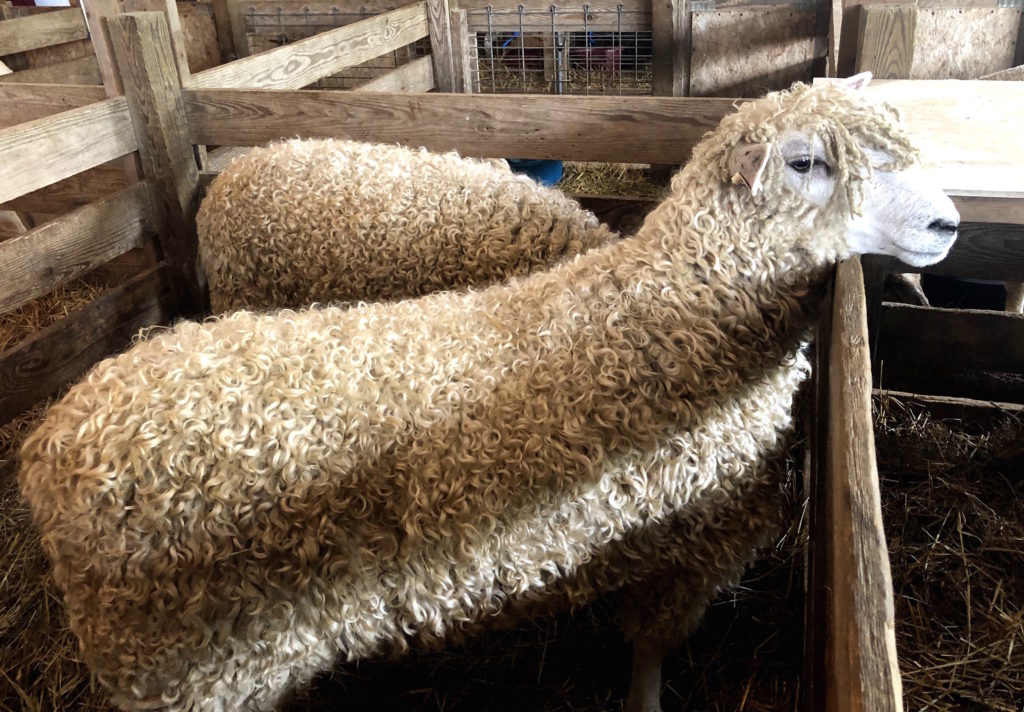
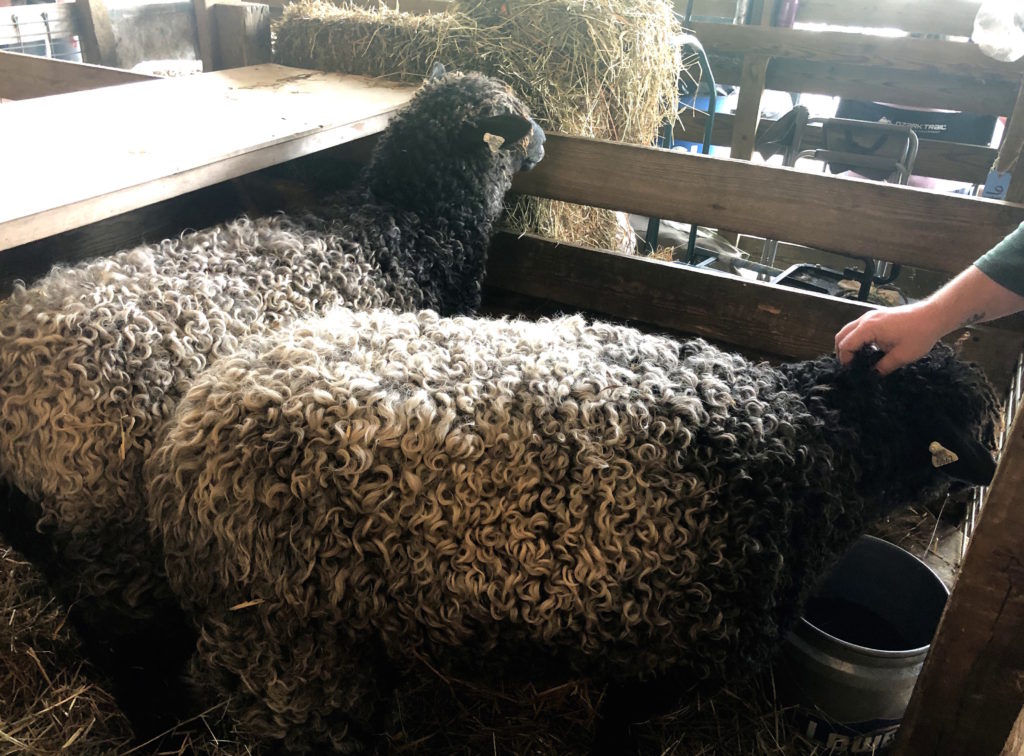
Demonstrations
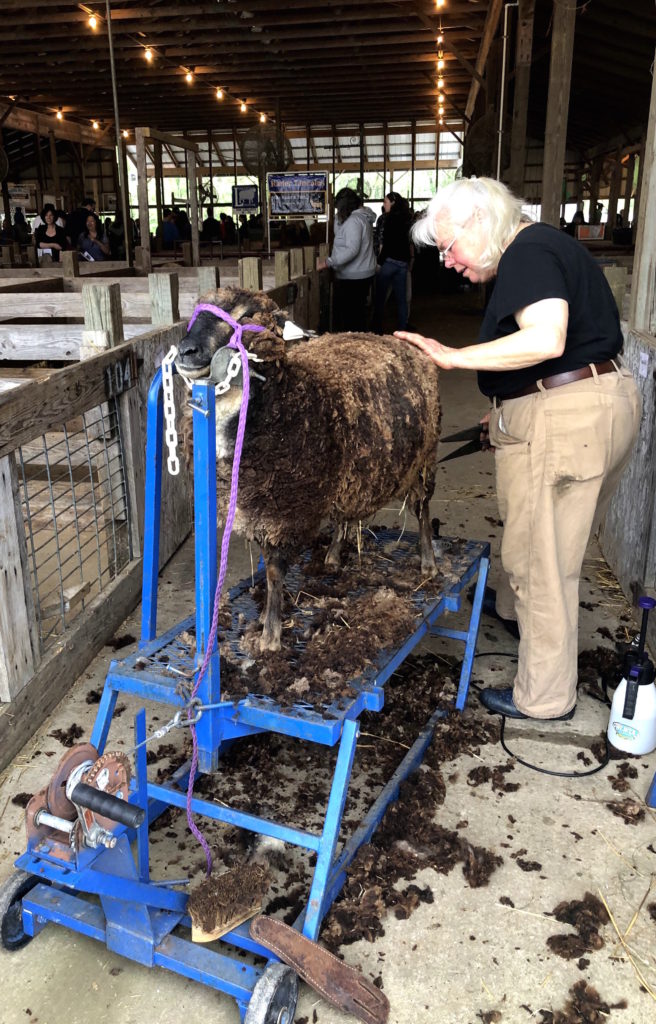
Not surprisingly, sheep will overheat easily in summer in their thick fleeces. They have been bred to grow thick coats that must be shorn. Throughout the day, we saw shearing exhibitions in the livestock barn. Most of the shearing was done by hand with manual shears, just like it was hundreds of years ago.
We were encouraged to watch, ask questions, even touch the sheep! Of course, we gladly obliged.
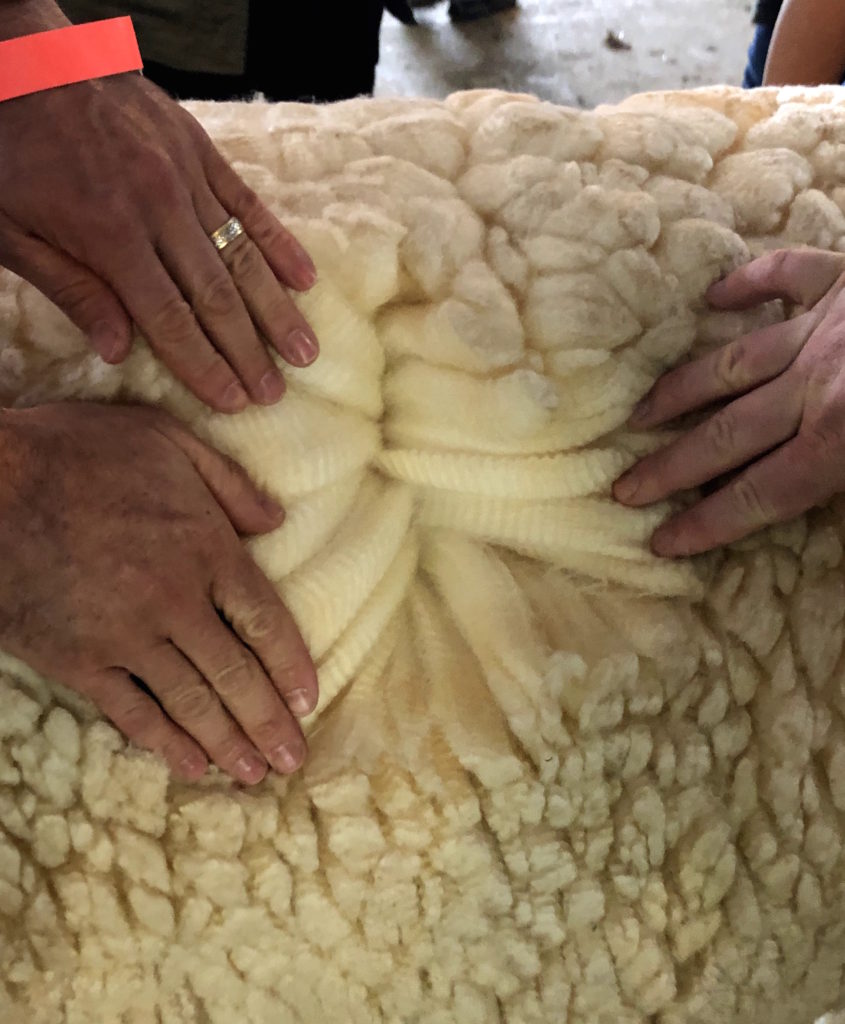
While I’ve spent a good amount of time near sheep, I didn’t realize how thick and deep fleeces could grow!
I could feel the lanolin on the raw wool, too. It left a pleasant, silky residue on my fingertips.
Breed Characteristics
My favorite part of the sheep display didn’t actually include any of these adorable, live sheep!
I found a long table display that showcased all of the breeds in one of the barns. It included an information card with a photo of a typical sheep of that breed, its characteristics, and a description of its fleece.
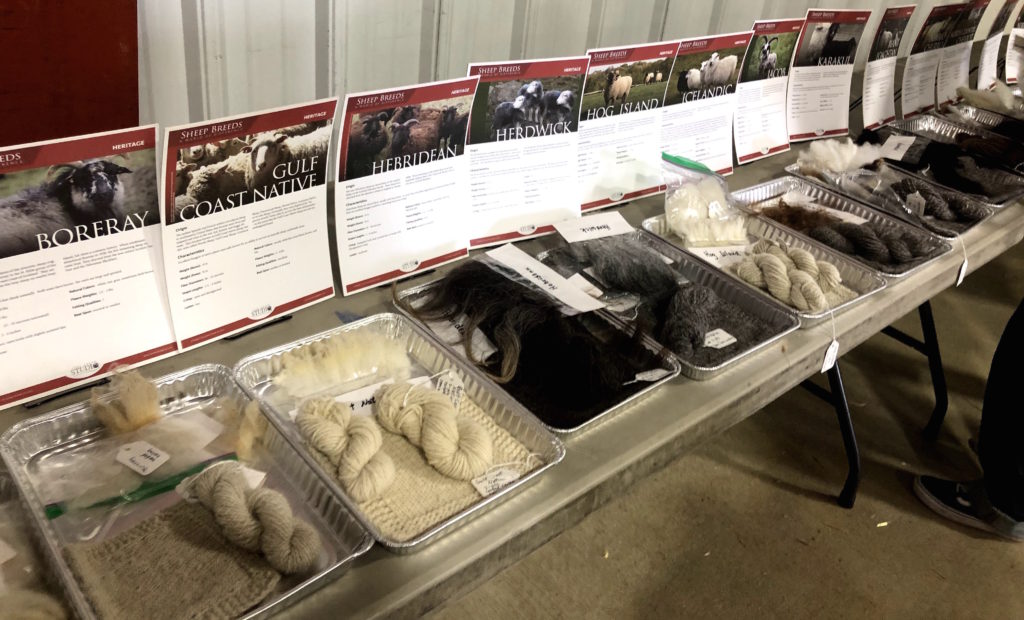
Below that, there was a tray for each breed. It included a tuft of raw wool, yarn spun from that wool, and a washcloth knitted from that yarn. All were undyed to showcase the typical color of the breed.
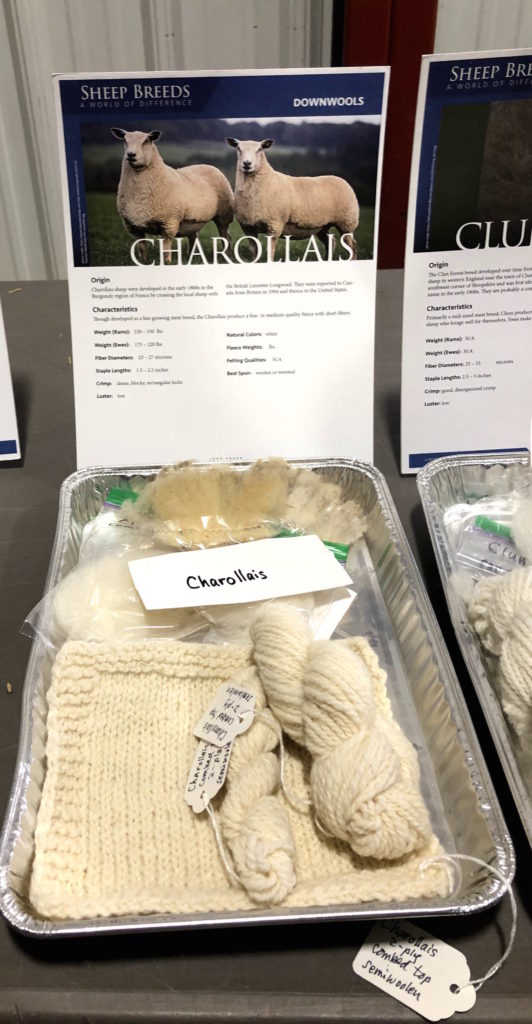
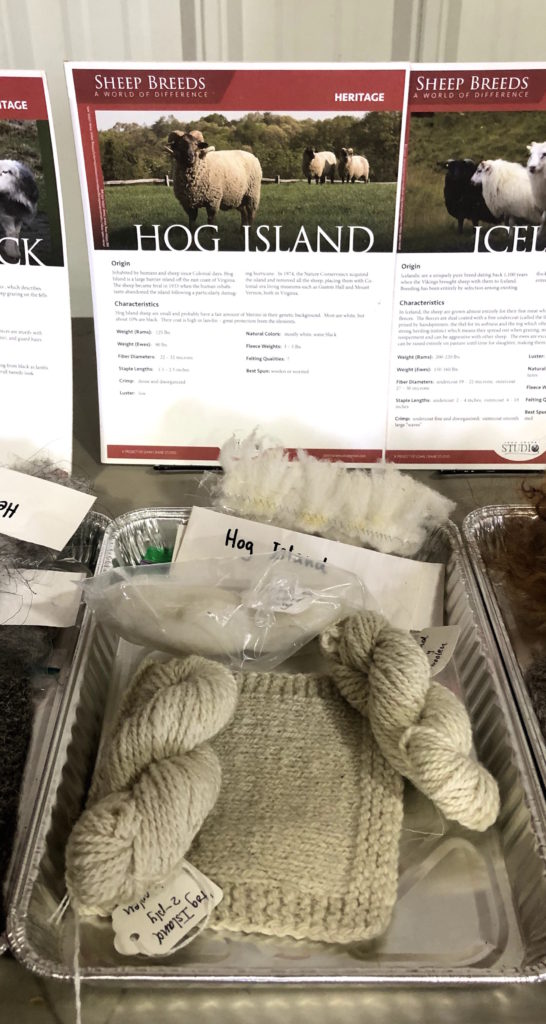
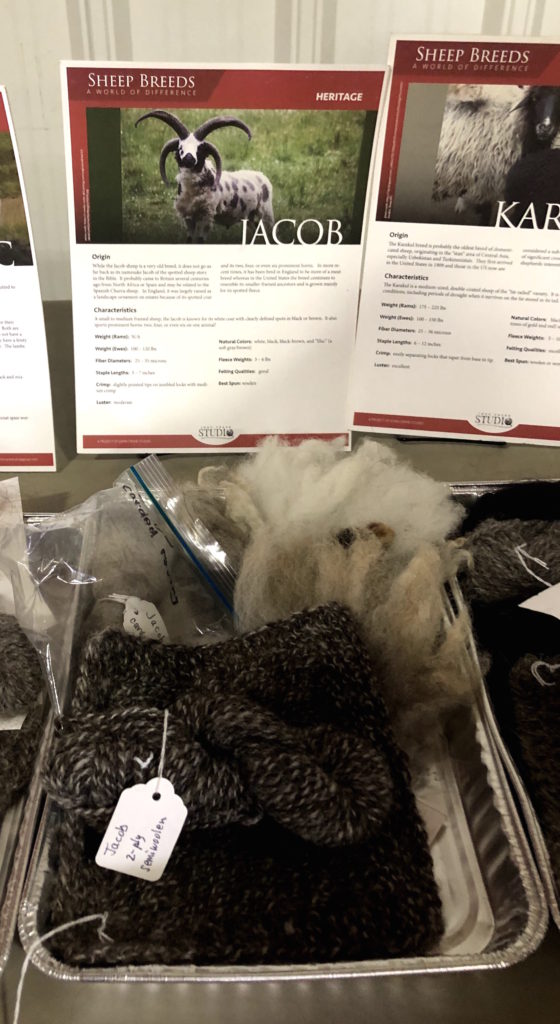
As a knitter, I found this fascinating. I don’t know enough about sheep to determine what yarn made from each breed would look like, let alone how one might differ from the next. This helped everything click!
(Sheep &) Wool
This festival boasts over 250 vendors! This is just a sampling of the interesting things that caught my eye.
This yarn — shiny, fine, and rich in color — caught my eye. It’s 100% rayon!
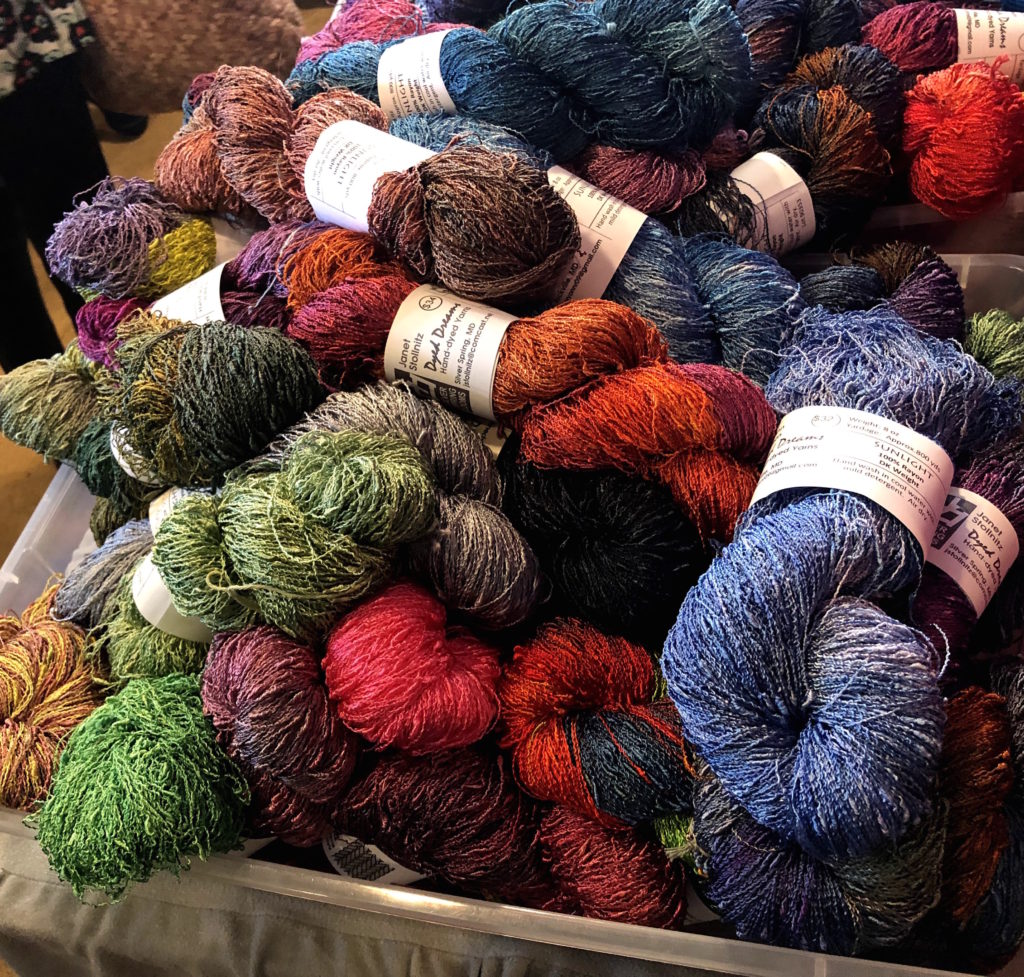
These sock blanks are rich in color and have the most even gradient dye I’ve ever seen!
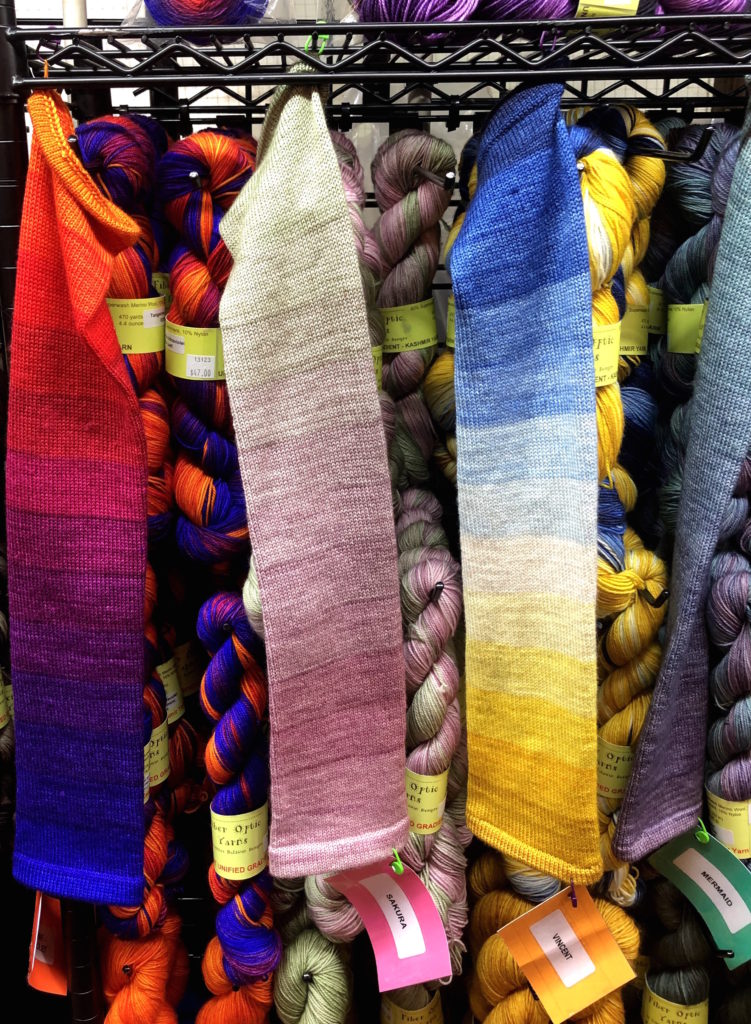
I’ve needle felted a penguin and I have to say, it didn’t look half as realistic as these animals. All of them are made of felted wool and kits were available.
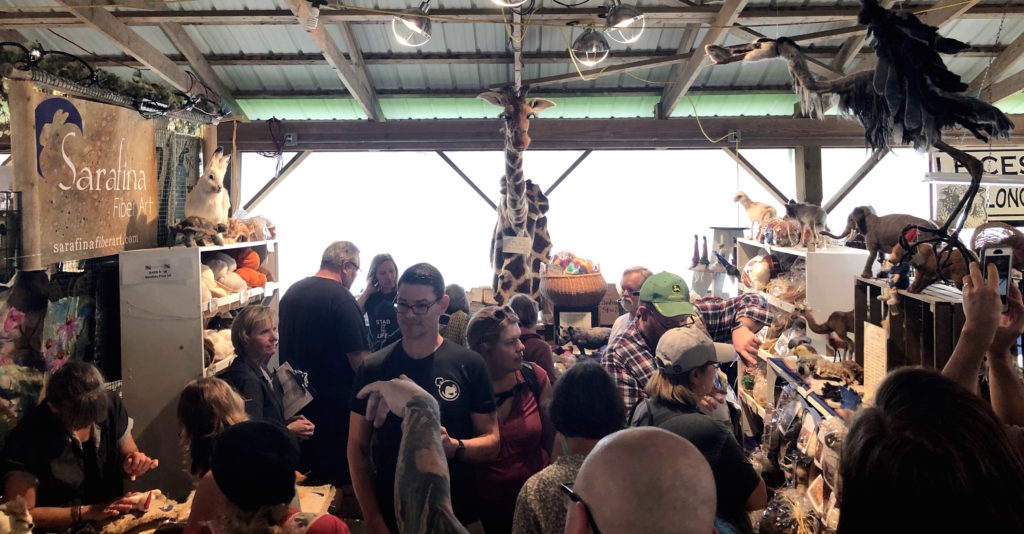
Seriously, this is gorgeous work. Can you believe it’s made of wool?
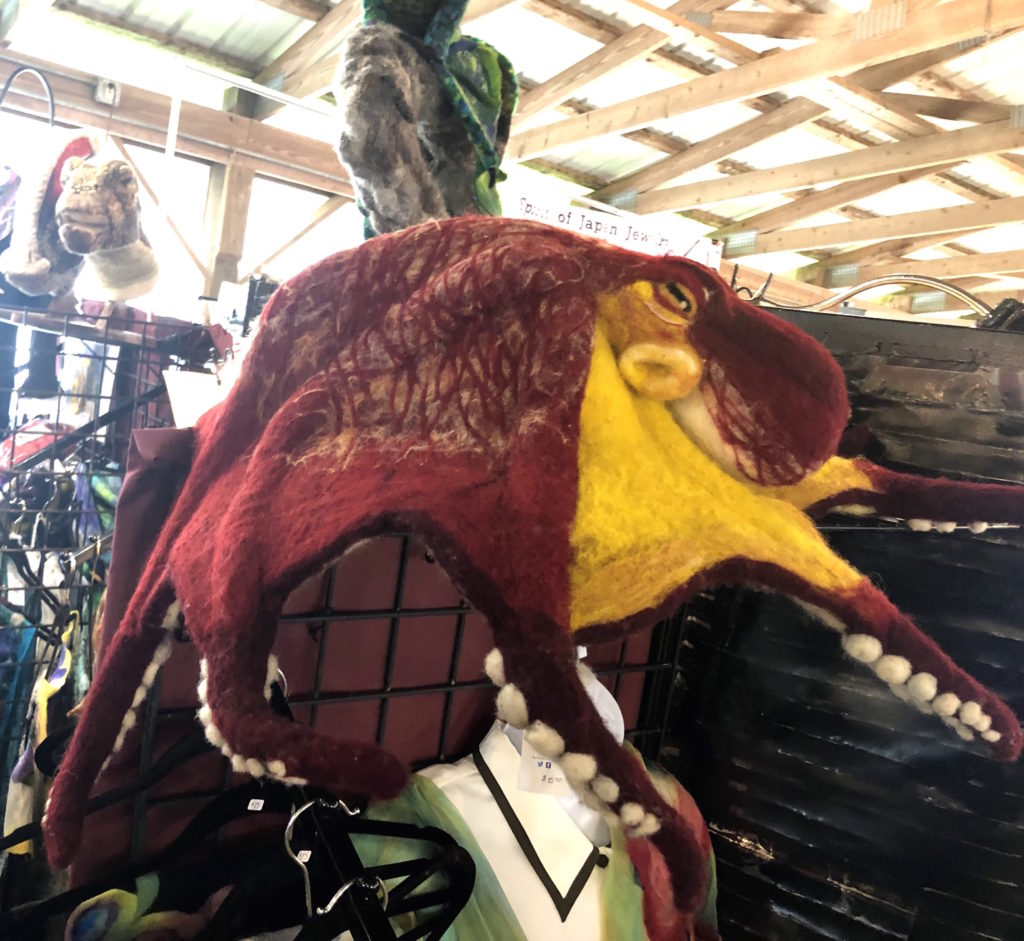
Of course, there were also notions.
These tiny stitch markers are smaller than my fingertip, so don’t worry about them weighing down your needles. Look at that detail, though!
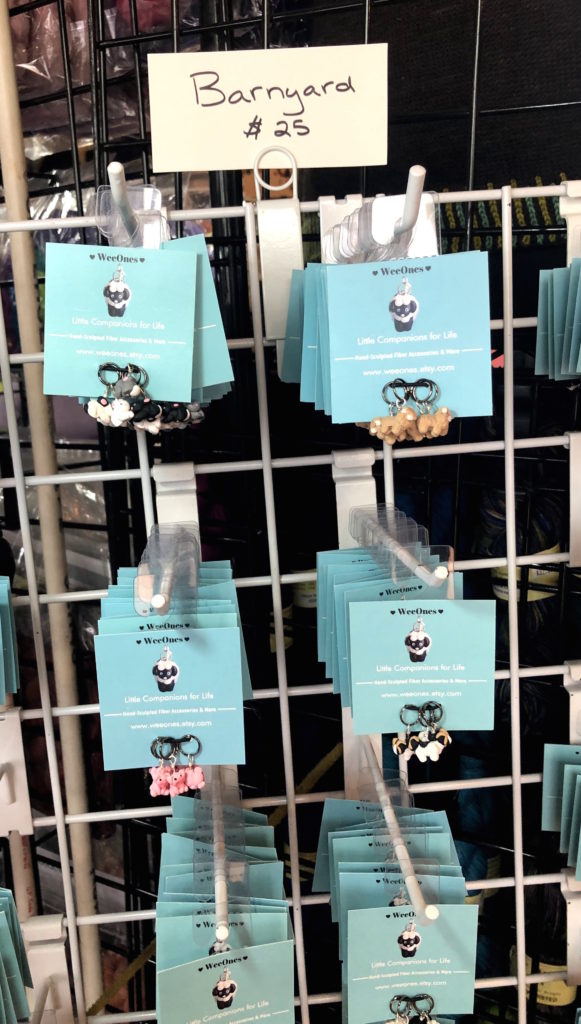
If you’re dragging along someone who isn’t interested in fiber arts, there are a few items for them, too.
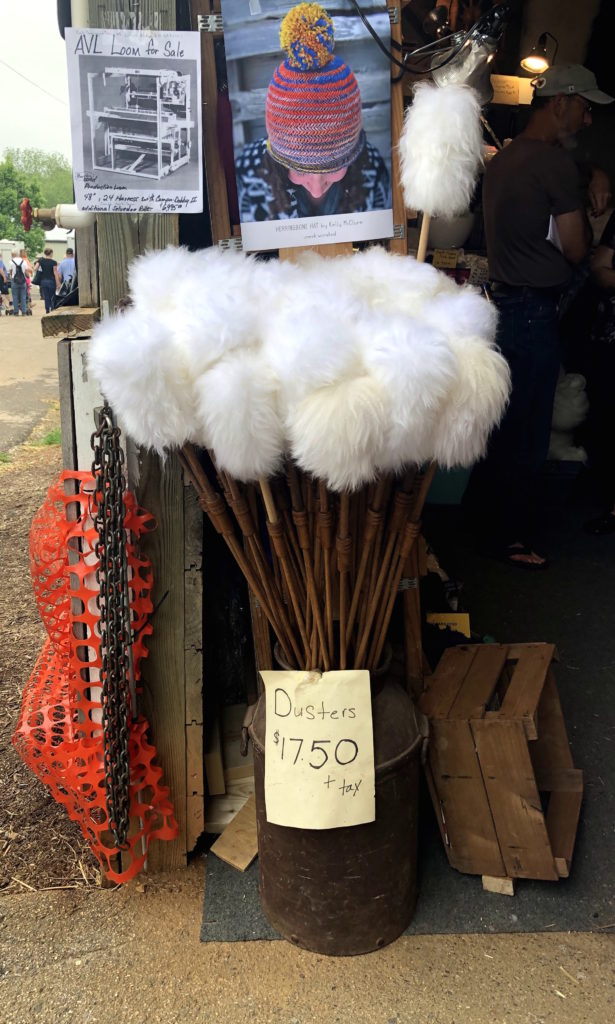
The Midway
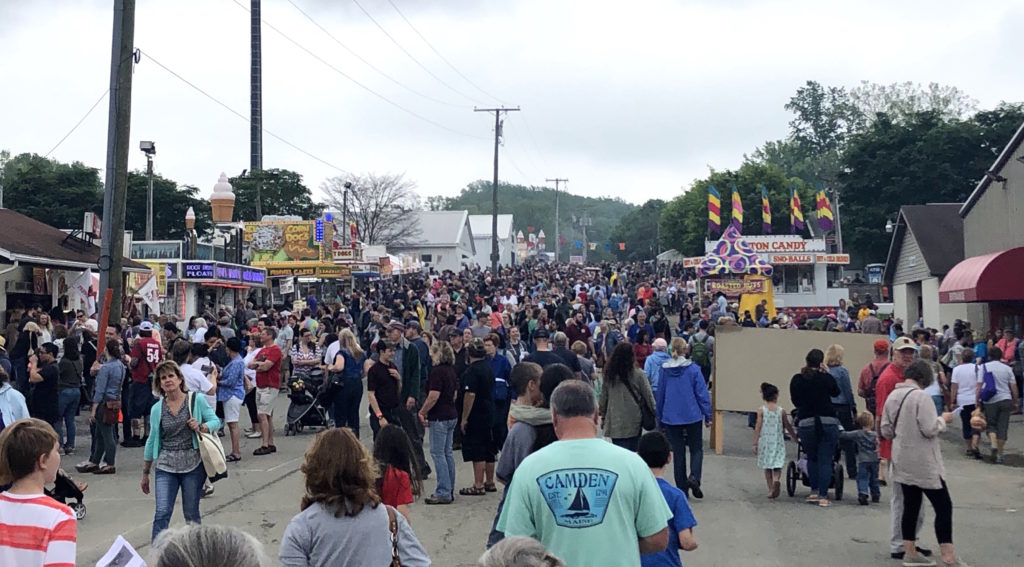
I wasn’t kidding about those crowds!
But the smell of fair food more than made up for it!
The Yarn Barn
I spent the morning volunteering in the Yarn Barn, your stop for all things MSW!
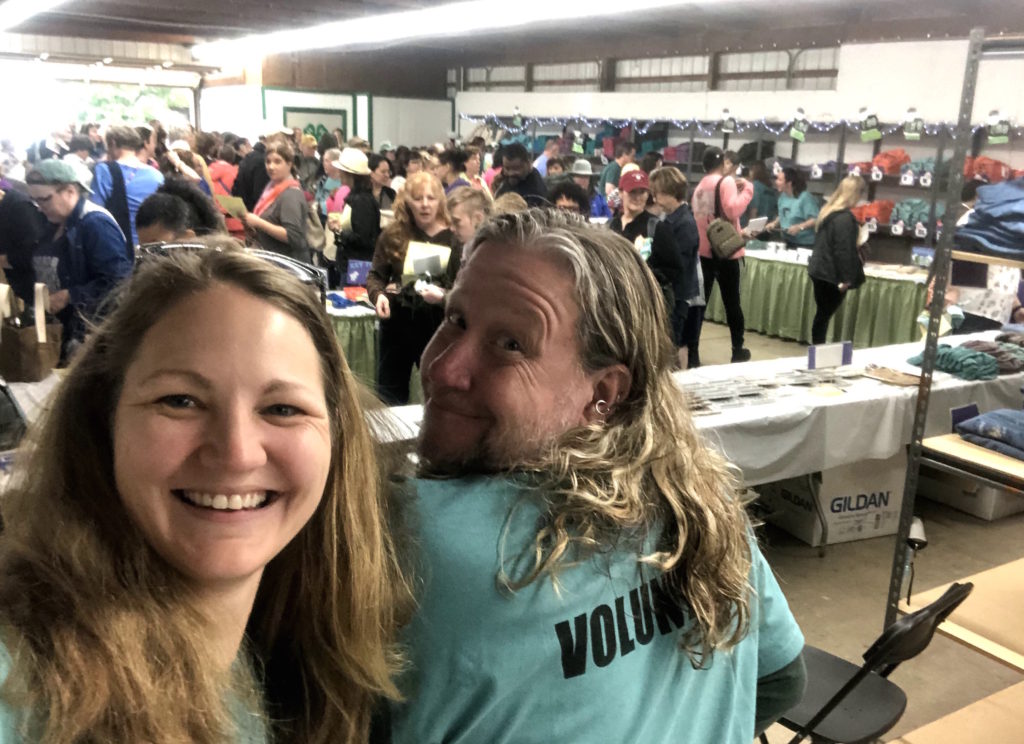
My time was mostly spent fetching t-shirts, sweatshirts, and totes featuring the 2019 artwork.
If you’re planning to shop, get there early! Many sizes and colors sold out quickly.
If you’re able, I recommend volunteering. Though you sacrifice time you could be browsing, you get the chance to really connect with others who share your interests. We were able to briefly chat with one of the event organizers, too.
We had an unforgettable time.
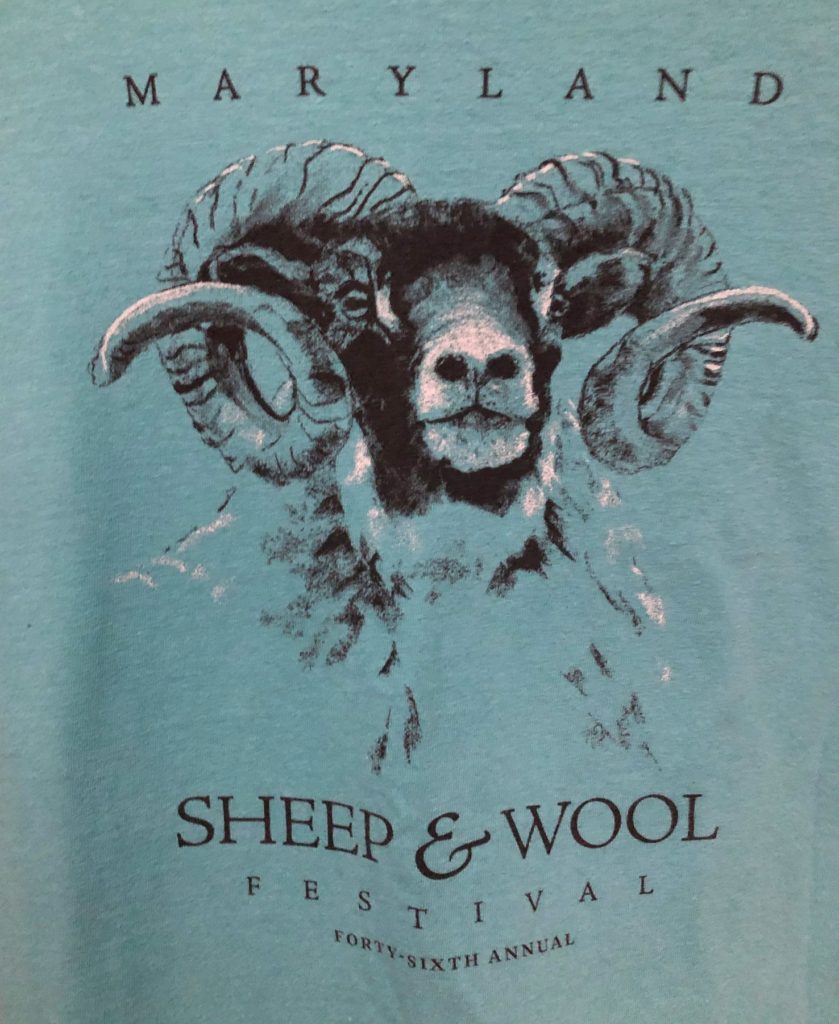
Plan Your Visit
Maryland Sheep & Wool Festival
2210 Fairgrounds Road
West Friendship, Maryland 21794
website


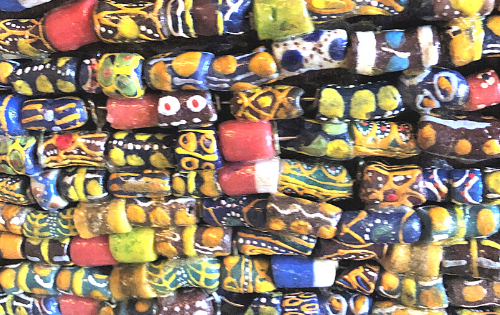
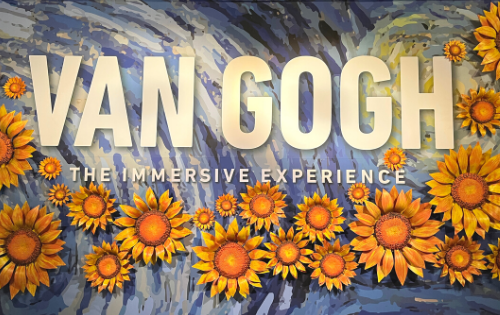

4 Comments
Pingback:
Pingback:
Pingback:
Pingback: